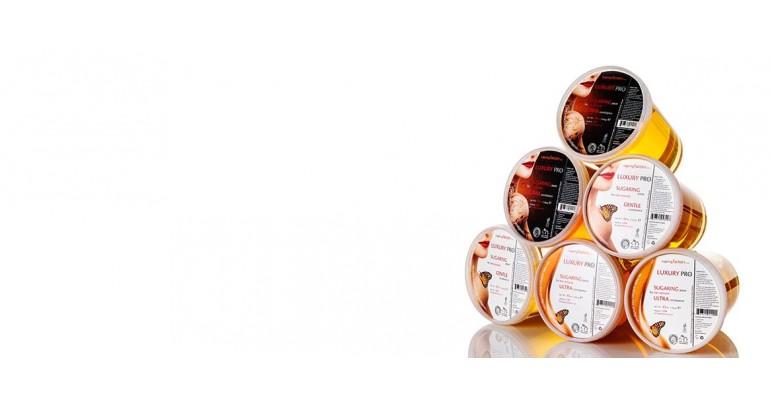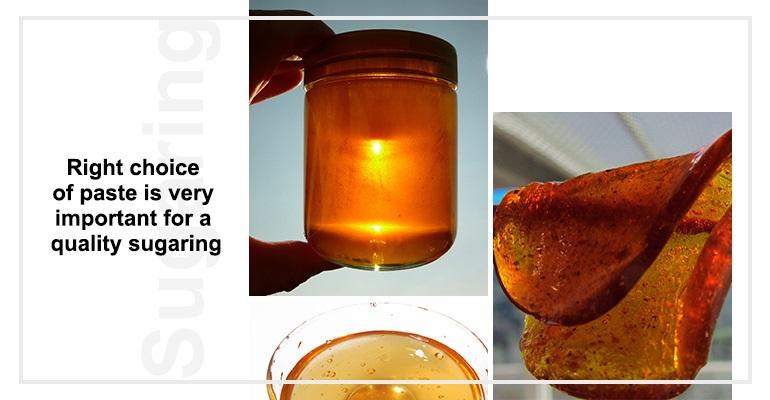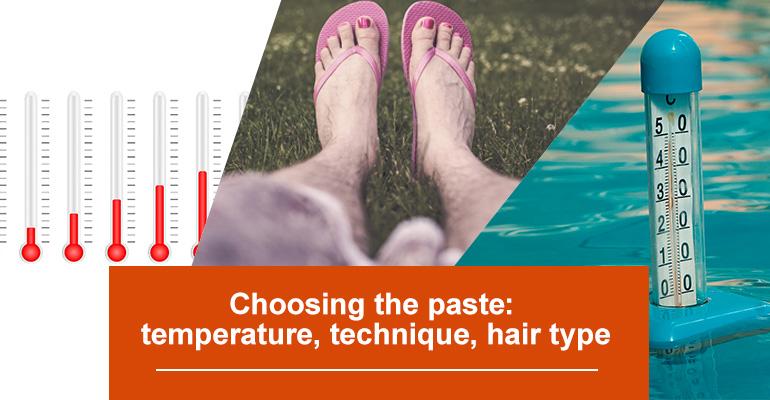
Characteristics of the pastes with different density
Thickness of sugaring paste depends on amount of water content in it: less water is left after boiling, thicker the paste is. The choice of paste with a right thickness – is a key factor for perfect sugaring.
Pastes density
Producers suggest different classifications for sugaring pastes, but it doesn't change the main idea, because all sugar pastes can be divided into:
- ultra soft,
- soft,
- medium,
- hard.
In professional pastes line Luxury Pro from Sugaring Factory these are: Soft, Gentle, Ultra and Ultima.

You have to remember, that “soft” and “medium”, don't mean that pastes from different manufacturers will have the same thickness. You can expect stable quality result, only if you buy paste from trusted manufacturer, who produce paste on professional level.
Why the paste thickness is important?
It is very important to choose a right paste, suitable for client's skin temperature, hair type, temperature in the room, chosen techniques and other indexes. If you make a mistake, paste will reset all efforts of specialist and client to zero result.
Too soft paste will “stick”, in other words it strongly sticks to the hands of esthetician and client's skin, not coming off after pulling and doesn't remove hair. Too thick paste – is difficult to apply, break's hair during pulling, needs a lot of strength from the specialist.
Choice of paste based on its thickness
Compositions of sugaring pastes differ with temperature of “melting” in hands of esthetician, on the client's body and temperature of the air. The softer is the paste, the colder should be conditions for its right work.
Besides, there are standard recommendations for choosing the paste with a right thickness, depending on sugaring technique. For bandage and spatula techniques, for example, more likely ultra soft or soft paste would be chosen, (if depilation is done not in “warm” zone). Beginning “manual” specialists use harder pastes. A manual-professional (and it's the highest level) will choose the softest paste for his work. Soft paste dramatically speed up the work and its quality, however , it won't forgive you even one second long delay in your work. Soft paste is also no good if the “snatch” technique haven't been mastered yet, as well as other skills, that come only with experience.
Finally, a choice of paste will be based on the hair type, that a specialist will work with. Thick, coarse, dark hair (after multiple shavings, pubic, mustache , beard) need harder paste. For “fuzz” the softest “caramel” could be good enough.

Secret from professionals
The thickness of the paste you decided to work with – is not a permanently chosen index, that you have to accept. A perfect consistency for you, not so fast of course, is possible to find after multiple mixing of pastes with different consistency. That's why we recommend to buy not one, but at least two different density pastes, for making mixes.
Many specialists are using paste of a medium thickness, for “dilution” of soft or hard paste, in work with different zones. You will need patience and time for multiple experiments, (better to perform them on yourself or family, having their permission). But later on, you will be able to decide on the right type of the paste, only after one glance at the client.
As a conclusion
(factors in the columns in descending order of importance):
(factors in the columns in descending order of importance):
| Esthetician's hands temperature | Temperature of the skin area | Air temperature | Technique | Hair type | |
| Softer ones | Lower than medium | Low (legs, arms) | Normal (under +25°C) | Bandage, spatula | Fuzz; facial hair, arms, legs, hair that haven't been shaved before (or rare) |
| Harder ones | Higher than normal | High (bikini, armpits) | High | Manual | Hair after shaving, pubic,beard, mustache and etc. |


 Cart
Cart 